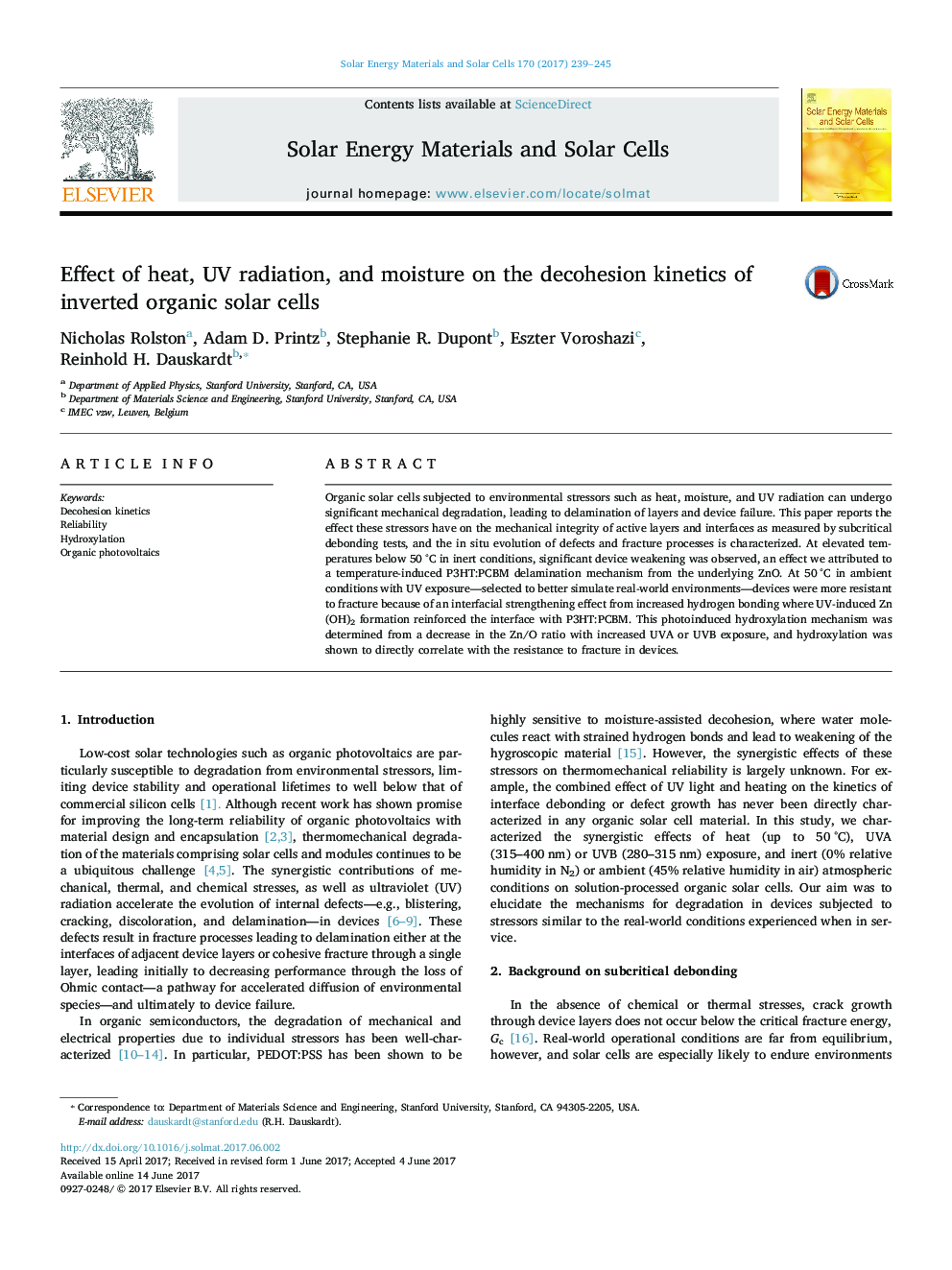| Article ID | Journal | Published Year | Pages | File Type |
|---|---|---|---|---|
| 6456849 | Solar Energy Materials and Solar Cells | 2017 | 7 Pages |
â¢Subcritical debonding test measures in situ the effects of environmental stressors.â¢Heat in inert conditions weakens ZnO/P3HT:PCBM interface.â¢Heat, moisture, and UV in ambient strengthens ZnO/P3HT:PCBM interface.â¢Effect of environmental stressors on stability informs reliable device design.
Organic solar cells subjected to environmental stressors such as heat, moisture, and UV radiation can undergo significant mechanical degradation, leading to delamination of layers and device failure. This paper reports the effect these stressors have on the mechanical integrity of active layers and interfaces as measured by subcritical debonding tests, and the in situ evolution of defects and fracture processes is characterized. At elevated temperatures below 50 °C in inert conditions, significant device weakening was observed, an effect we attributed to a temperature-induced P3HT:PCBM delamination mechanism from the underlying ZnO. At 50 °C in ambient conditions with UV exposure-selected to better simulate real-world environments-devices were more resistant to fracture because of an interfacial strengthening effect from increased hydrogen bonding where UV-induced Zn(OH)2 formation reinforced the interface with P3HT:PCBM. This photoinduced hydroxylation mechanism was determined from a decrease in the Zn/O ratio with increased UVA or UVB exposure, and hydroxylation was shown to directly correlate with the resistance to fracture in devices.
Graphical abstractDownload high-res image (198KB)Download full-size image
